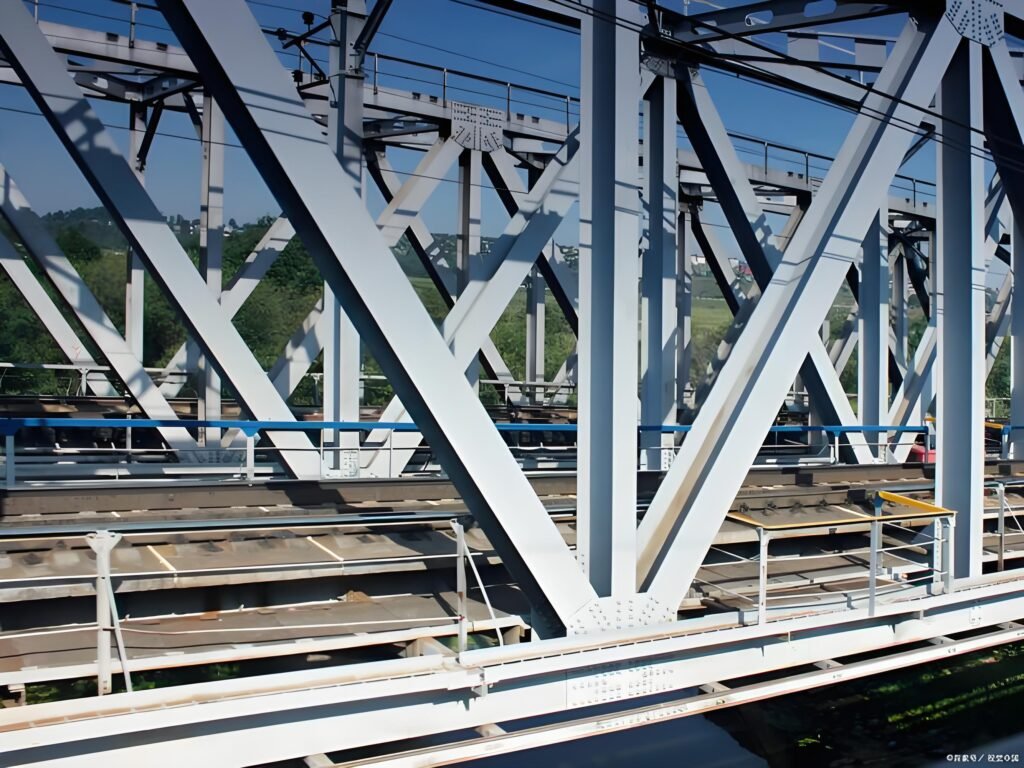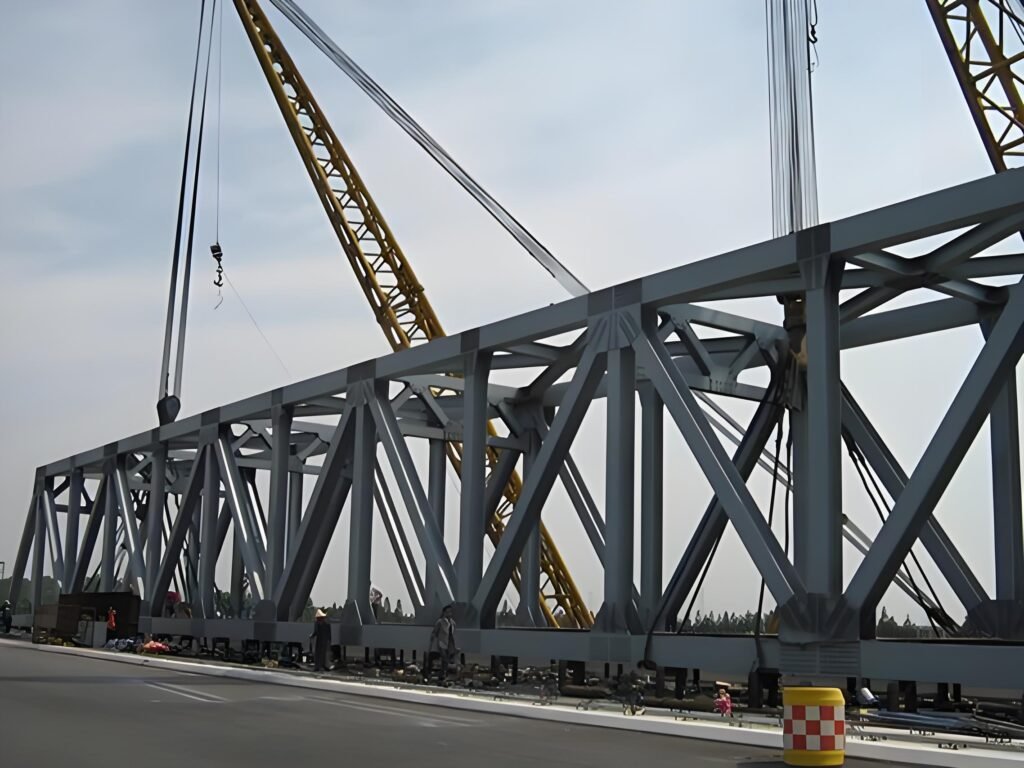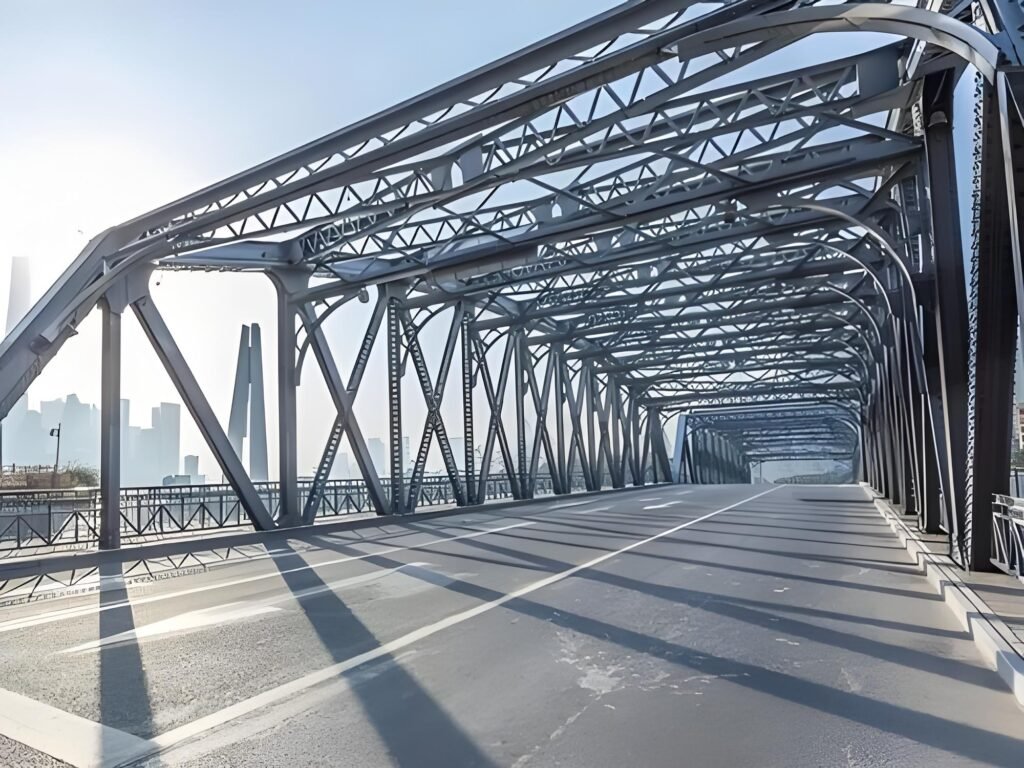- What Is A Steel Bridge Structure ?
- How Maintain A Steel Bridge Structure?
- What are the Steel Bridge Structure Applications?
- How To Choose Right A Steel Bridge Structure?
- Summary
Steel bridge structures have become a cornerstone of modern infrastructure, providing durability, strength, and versatility. As cities and communities continue to grow, the demand for efficient transportation networks has increased, making the selection of the appropriate steel bridge structure critical. This guide will walk you through the essentials of steel bridge structures, including their applications, maintenance, and factors to consider when choosing the right one.
1.What Is a Steel Bridge Structure?
A steel bridge structure is a type of bridge that utilizes steel as its primary material for construction. These structures are designed to support vehicular and pedestrian traffic while spanning over obstacles such as rivers, valleys, or other roadways. Steel is favored for its high strength-to-weight ratio, making it an ideal choice for long spans and heavy loads.
Steel bridge structures come in various designs, including girder bridges, arch bridges, and suspension bridges. The choice of design often depends on the specific requirements of the project, including the span length, load capacity, and environmental conditions. Advantages of steel bridge structures include:
1.1Durability: Steel is resistant to many environmental factors, including corrosion (when properly treated), making it suitable for long-term use.
1.2Flexibility in Design: Steel allows for innovative architectural designs, enabling engineers to create aesthetically pleasing and functional structures.
1.3Cost-Effectiveness: While the initial cost of a steel bridge structure may be higher than other materials, its longevity and low maintenance needs often result in lower lifecycle costs.
2.How to Maintain a Steel Bridge Structure?
Maintenance is critical to ensuring the longevity and safety of a steel bridge structure. Regular inspections and maintenance can prevent minor issues from escalating into significant problems. Here are some essential maintenance practices:
2.1Regular Inspections: Conduct thorough inspections at least once a year, focusing on critical components such as joints, bearings, and welds. Look for signs of corrosion, fatigue, or structural damage.
2.2Corrosion Protection: Implement protective coatings, such as paint or galvanization, to shield the steel from rust and deterioration. Regularly check and reapply these coatings as necessary.
2.3Cleaning: Keep the bridge free from debris, vegetation, and contaminants that can lead to corrosion or structural issues. Regular cleaning can also enhance the bridge’s appearance.
2.4Load Monitoring: Use sensors to monitor the load and stress on the bridge structure. This technology can provide real-time data, allowing for immediate action if any issues arise.
2.5Repairs: Address any identified issues promptly. Whether it’s a small crack or significant damage, timely repairs can extend the lifespan of the bridge.
By prioritizing maintenance, you can ensure that your steel bridge structure remains safe and functional for years to come.

3.What Are the Steel Bridge Structure Applications?
Steel bridge structures are versatile and can be utilized in various applications. Some common uses include:
3.1Highway and Road Bridges: These structures are often employed to facilitate vehicular traffic over rivers and other obstacles, ensuring smooth transportation routes.
3.2Railway Bridges: Steel bridge structures are ideal for supporting heavy trains, providing stability and safety for rail transport.
3.3Pedestrian Bridges: Lightweight steel designs can create safe and aesthetically pleasing walkways over busy roads or natural barriers.
3.4Industrial Applications: Many industrial facilities use steel bridges for internal operations, such as connecting warehouses or facilitating material transport.
3.5Urban Development: In urban areas, steel bridge structures can be integrated into public transport systems, enhancing connectivity and accessibility.
3.6Specialty Applications: Steel bridges may also be used in unique scenarios, such as temporary structures for events or emergency situations.The adaptability of steel bridge structures to various applications makes them an essential component of modern infrastructure.

4.How to Choose the Right Steel Bridge Structure?
Selecting the right steel bridge structure involves careful consideration of several factors:
4.1Purpose and Load Requirements: Determine the primary use of the bridge and the expected load capacity. This will guide the selection of the appropriate design and materials.
4.2Span Length: The length of the bridge span will influence the design. For longer spans, consider using truss or arch designs, while shorter spans may be suited for beam designs.
4.3Environmental Conditions: Assess the environmental factors that may affect the bridge, such as wind, seismic activity, and potential exposure to corrosive elements. Choose materials and protective measures accordingly.
4.4Budget: Establish a budget that encompasses not only construction costs but also long-term maintenance and operational expenses. Steel bridge structures can have varying costs based on design complexity and materials used.
4.5Aesthetic Considerations: If the bridge is in a visible location, consider how its design will fit into the surrounding environment. Steel offers flexibility in aesthetics, allowing for custom designs that enhance the area.
4.6Regulatory Requirements: Ensure compliance with local, state, and federal regulations regarding bridge construction and safety. This may involve obtaining permits and adhering to specific engineering standards.By carefully evaluating these factors, you can choose the right steel bridge structure that meets your project’s needs and ensures safety and longevity.
5.Summary
In conclusion, steel bridge structures are vital components of modern infrastructure, offering durability, versatility, and aesthetic appeal. Understanding what a steel bridge structure is, how to maintain it, its various applications, and the factors to consider when choosing the right one can significantly impact the success of your project.
Regular maintenance is crucial to prolonging the life of a steel bridge structure, while its applications range from highway bridges to pedestrian walkways. When selecting a steel bridge structure, consider the purpose, span, environmental conditions, budget, aesthetics, and regulatory requirements. By following this ultimate guide, you can make informed decisions that will lead to the successful implementation of a steel bridge structure that stands the test of time.
Contact Zhuohang now to obtain customized one-stop steel frame building construction solutions and jointly create a more resilient urban future!

